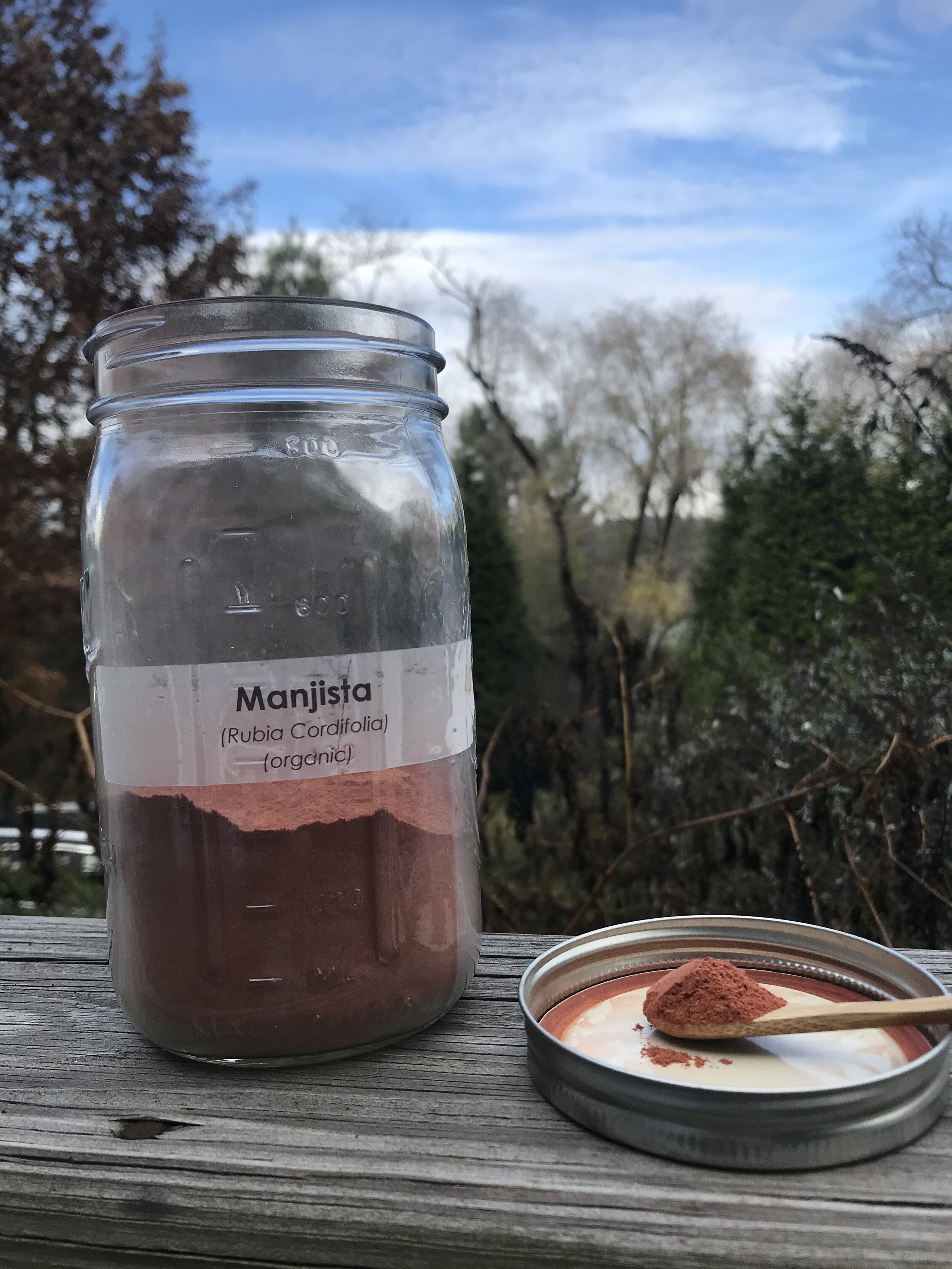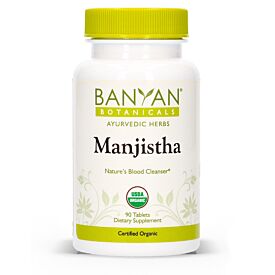Ayurvedic Herbs: Manjistha
/Ayurvedic Herbs
Ayurvedic herbs are one of the many chikitsas or treatments used in Ayurvedic medicine. These herbs are used as part of an herbal protocol recommended by an Ayurvedic professional. Thusly, all the Ayurvedic herbs should not be self-administered and Ayurvedic herbs should only be taken under-advisement of your Ayurvedic Counselor/Practitioner/Doctor and approved by your Primary Care Physician. The information on the Ayurvedic herb of Manjistha is only meant to educate you on the ways in which it is traditionally used in Ayurveda and is presented for educational purposes only. It is not intended as a substitute for the diagnosis, treatment, or advice of a qualified, licensed medical professional. The facts presented are offered as information only, not medical advice, and in no way should anyone infer that we are practicing medicine. Seek the advice of a medical professional for proper application of this material to any specific situation. Do not use the information found within this post to self-diagnose any medical conditions or treat any health problems or diseases. The information provided is not intended to prescribe or be taken as medical advice. If you have or suspect that you have a medical condition please contact your health care provider immediately.
“The essence of all beings is Earth. The essence of Earth is Water. The essence of Water is plants. The essence of plants is the human being.
Esam bhutanam prthivi rasha, prthivya apo raso-pam osadhayo rasa, osadhinam puruso rasah.”
Manjistha
Latin Name: Rubia cordifolia
Plant Family: Rubiaceae
English Name: Indian Madder
Sanskrit Name: Manjistha
Part Used: root
Botanical Description: trunk of tree is square shaped and reddish colored; leaves are heart-shaped and pointed and are roughly 6-12 centimeters in length; stalks are 12-24 centimeters in length with thorns; flowers are small and yellowish-white in color; fruits are round and violet or black in color; roots are long and thick and reddish in color
Taste (Rasa): bitter, sweet, astringent
Energetics (Virya): cooling
Post-Digestive Effect (Vipaka): pungent
Quality (Guna): heavy, dry
Dosha: PK- V+
Tissues (Dhatu): plasma (rasa), blood (rakta), muscle (mamsa), bone (asthi)
Systems (Srotamsi): circulatory (rakta vaha srotas), female reproductive (artava vaha srotas), excretory (purisha vaha srotas), bone (asthi vaha srotas)
Constituents: glucosides (manjistha, purpuroxanthin, purpurin); anthraquinone glycosides (lucidin, alizarin, rubiadin)
Actions: alterative, hemostatic, emmenagogue, astringent, diuretic, lithotriptic, antitumor
Ayurvedic Actions: improves complexion (varnya); destroys fever (jvarahara), diuretic (mutrajanana); lithagogue (asmaribhedana); diaphoretic (svedajanana); destroys toxins (visaghna); reduces accumulations (lekhaniya); blood purifier (raktasodhaka); eliminates itching (kandughna); prevents bleeding from high pitta (raktapittahara); haemostatic (sonitasthapana); analgesic (vedanasthapana); stool forming (purisasamgrahaniya); reduces pitta (pittasamana); reduces kapha (slesamana); bone mender (sandhaniya); alleviates skin diseases (kusthaghna); uterine herb (yoni)
Biomedical Actions: alterative, haemostatic, astringent, diuretic lithotriptic, emmenagogue, antipyretic, antitumor
Indications: skin, bleeding, gynecology, tumors/accumulations
Precautions: severe chills, high Vata
Preparations: decoction, powder, paste, medicated ghee
Formulations: manjisthhadi kadha, manjishthadyark
Manjistha has an affinity for the skin and is often used in external herbal skin preparations. It is especially beneficial for Pitta and Kapha prakruti (constitution) and vikruti (imbalances).
References
Frawley D. Yoga & Ayurveda: Self-Healing and Self-Realization. Twin Lakes, Wisconsin: Lotus Press; 1999.
Frawley D, Lad V. The Yoga of Herbs: An Ayurvedic Guide to Herbal Medicine. Twin Lakes, Wisconsin: Lotus Press; 2001.
Gogte VM. Ayurvedic Pharmacology & Therapeutic Uses of Medicinal Plants: Dravyagunavignyam. New Delhi, India: Chaukhambha Publications; 2016.
Pole S. Ayurvedic Medicine: The Principles of Traditional Practice. Philadelphia, PA: Singing Dragon; 2013.





